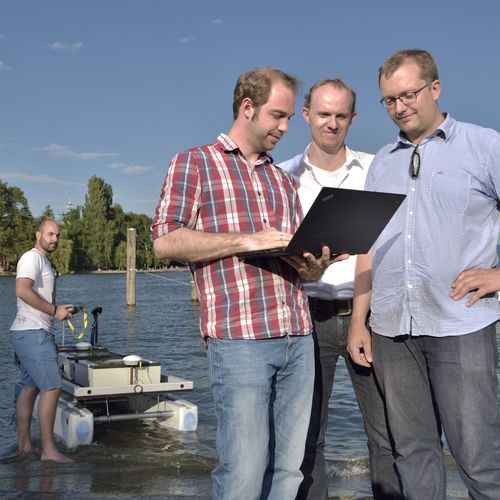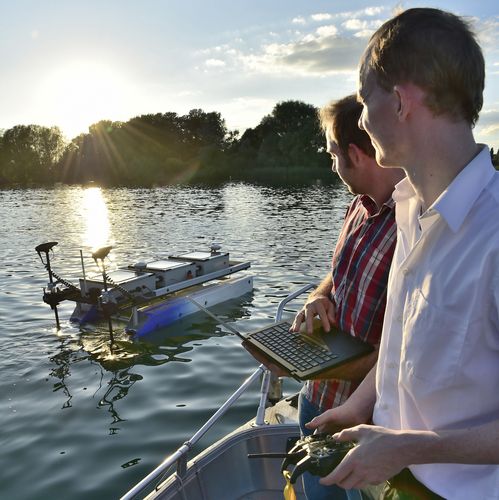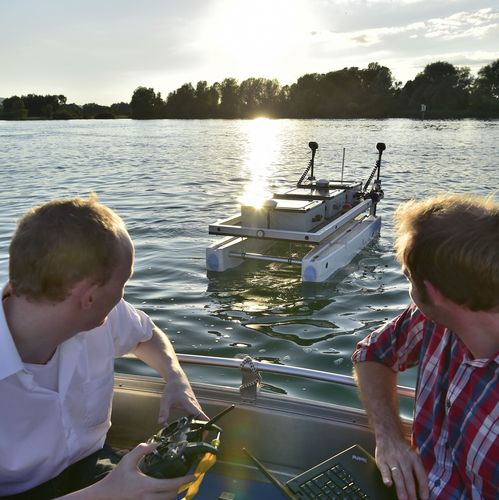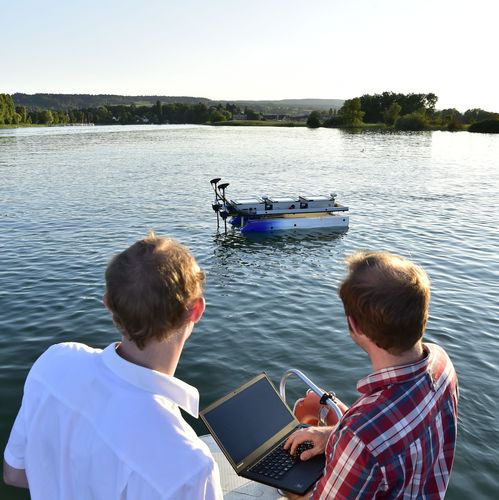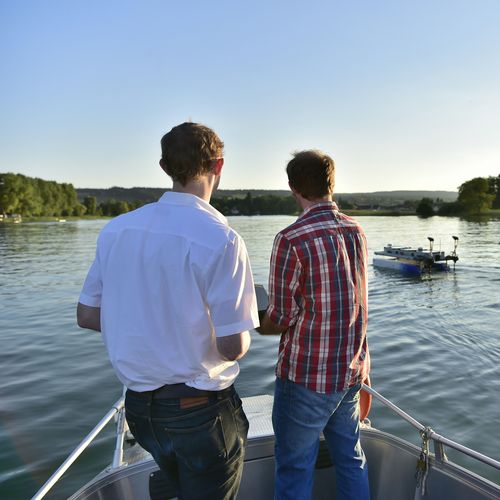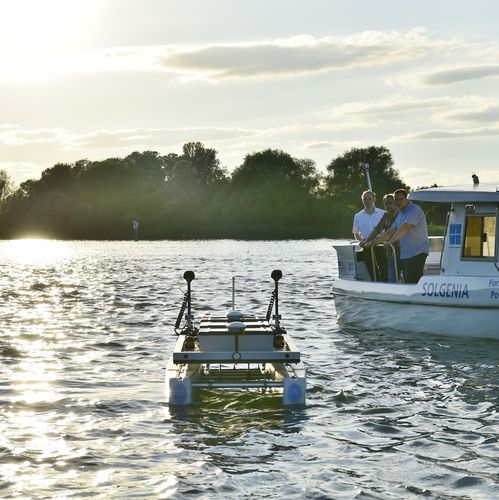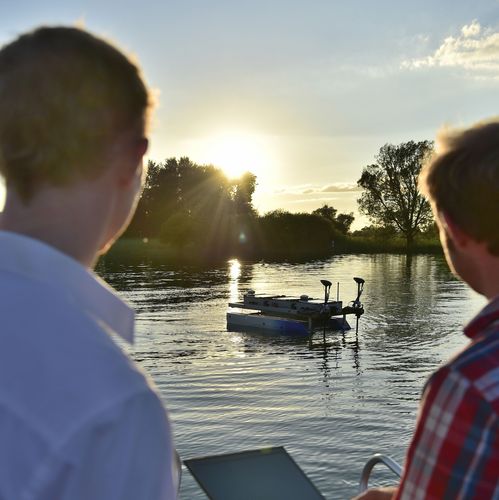
Stefan
Wirtensohn
Room
E
207
+49 7531 206-549
stwirten@htwg-konstanz.de
Office hours
Nach Vereinbarung

Michael
Blaich
mblaich@htwg-konstanz.de
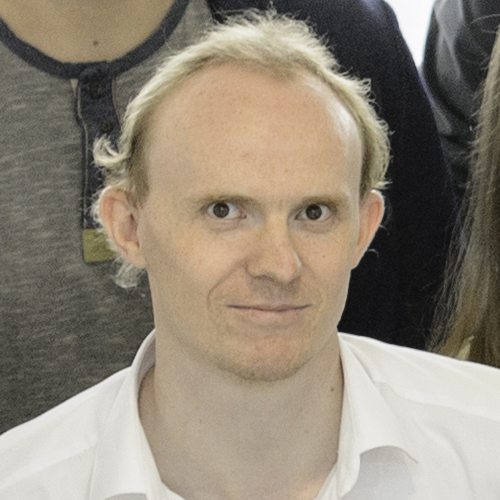
Michael
Schuster
Room
E
207
+49 7531 206-576
michael.schuster@htwg-konstanz.de
New procedures for avoiding ship collisions on inland waters
The aim of the CaRoLIME project is to develop a water robot that can navigate and work independently in an unknown environment. A test carrier is developed on which the use of various sensors, drive and control concepts can be investigated.
The project is divided into four themes:
- Design of the test carrier
- Sensorevaluation to environmental perception
- Map creation and path planning
- Trajectory traking
Design of the test carrier
In order to obtain an as stable platform as possible, a catamaran-like structure with two floating bodies is selected as the basis for the test carrier. This concept provides a large area for mounting the sensors and the electronics needed with a low water displacement. Two pivotable electric outboard motors are used as the drives. This allows the investigation of various drive and control concepts. On the one hand, it is investigated whether it is possible to control the test carrier with a purely differential drive concept without the pivoting of the motors. It also examines the advantages of swiveling the motors and how these additional degrees of freedom affect the control.
Sensorevaluation to environmental perception
In order to be able to find its surroundings, the robot must be able to observe them. For this purpose, the use and combination of various sensors from the fields of robotics, automotive and shipping are investigated. The aim is to develop a system that detects obstacles with the most cost-effective and energy-saving sensors. The shore line or other vehicles on the water can be obstacles for example. In addition, the water depth must also be taken into account, since the water robot must also avoid shallows, where the depth of water is insufficient for an overpass.
Map creation and path plannin
Based on the sensor information, the robot must be able to build a map of the environment in which it is located. This map must contain all static obstacles and the corresponding water depth. Algorithms are being developed that allow the robot to specifically explore and map its surroundings. On the basis of these maps, the water robot can then be given specific trajectories, which it then follows.
Trajectory traking
The precise tracking of the planned paths for the completion of service tasks or for docking requires powerful control algorithms. The requirements for the control are significantly higher here than for example in the indoor area. In addition to the strong drift behavior of floating objects during turning, disturbances such as wind, waves and current impose high demands on the control concepts used. In order to ensure the precision of the ship's movement even under adverse external circumstances, approaches are required that go beyond the standard. In this project model-based adaptive and non-linear control concepts are investigated.
